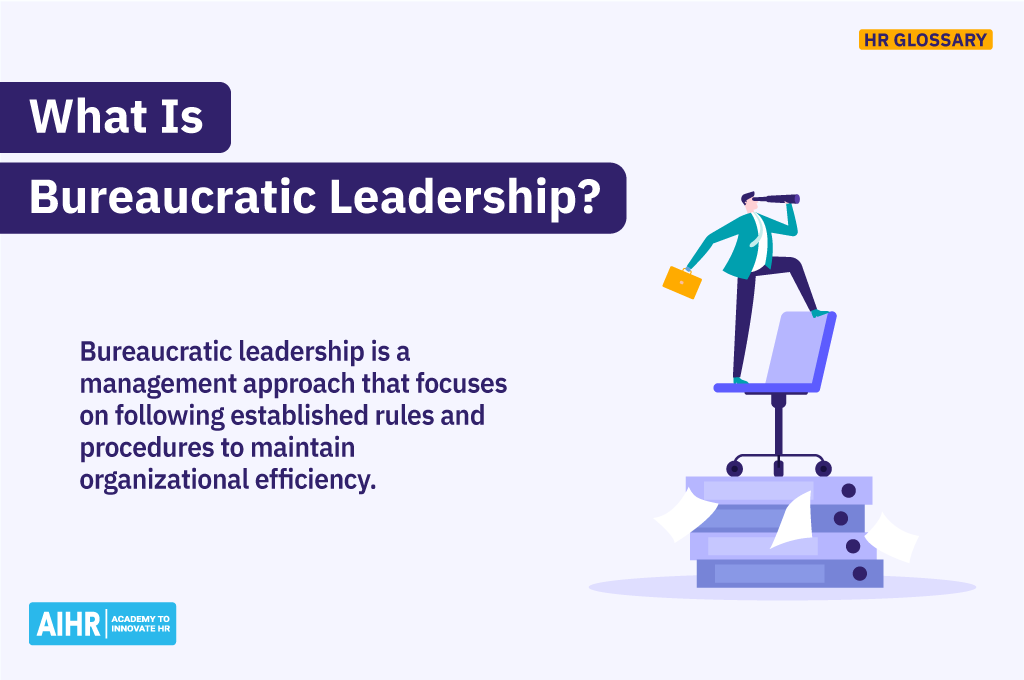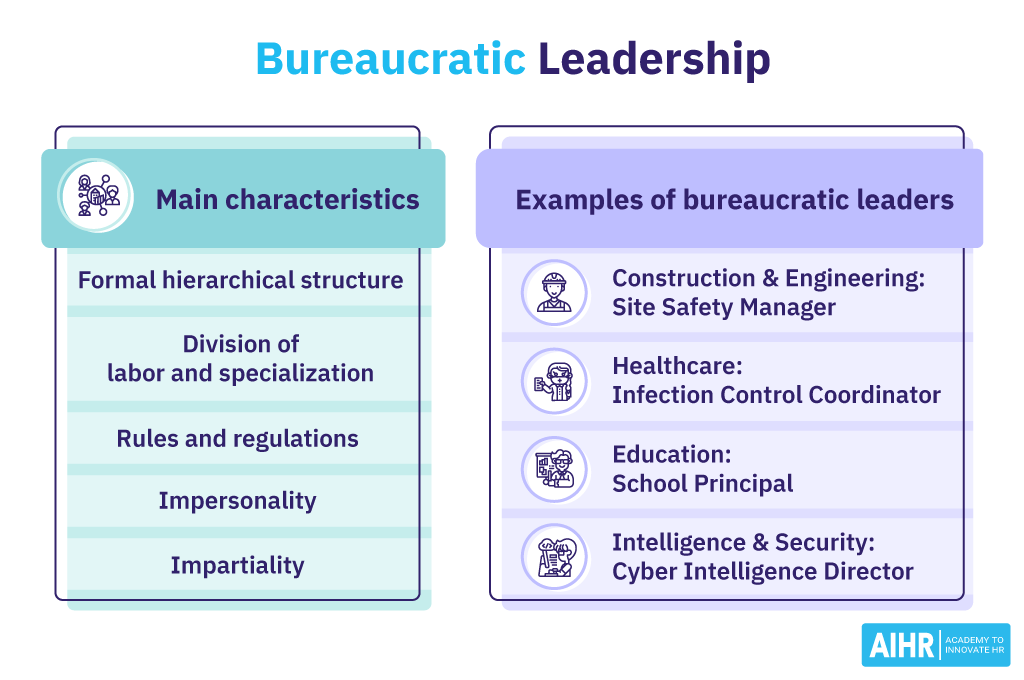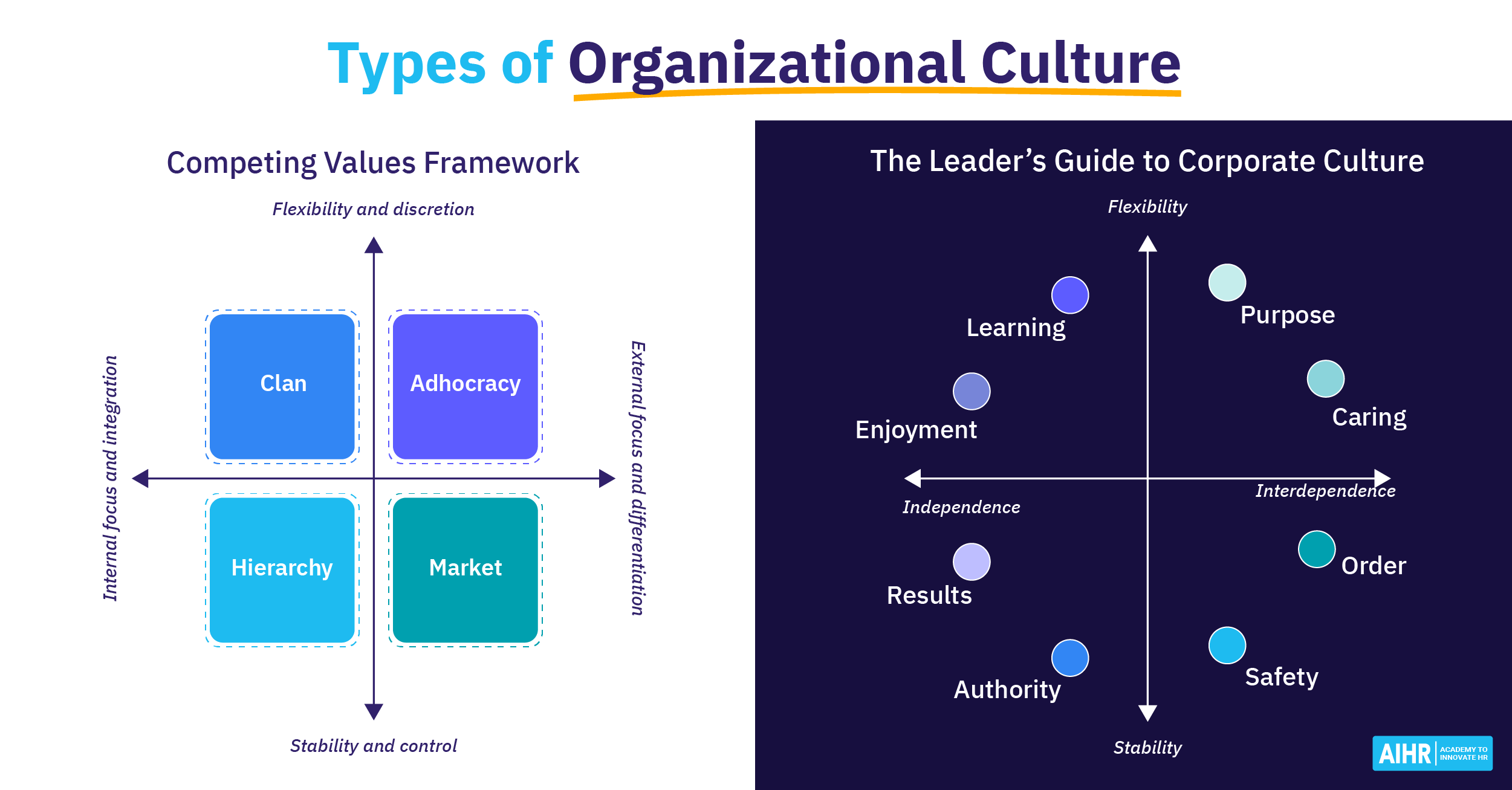Bureaucratic Leadership
What is bureaucratic leadership?
Bureaucratic leadership is a management style that follows a hierarchical structure. Decision-making follows a clear chain of command based on established rules and regulations.
Bureaucratic management promotes efficient systems due to clearly spelled-out expectations, roles, and responsibilities. The procedures and structure are also clearly defined, eliminating the risk of bias.
However, it can be seen as rigid and requires employees to conform to strict regulations and procedures, which can stifle creativity and innovation within the organization.

Characteristics of the bureaucratic leadership style
- Formal hierarchical structure: Decisions are made and communicated through a chain of command.
- Division of labor and specialization: Roles are assigned based on employees’ competence and skills, which promotes specialization.
- Rules and regulations: The style follows established rules and regulations.
- Impersonality: The style focuses more on organizational performance and less on individual employee contributions.
- Impartiality: Bureaucracy treats employees fairly and impartially, which minimizes discrimination.
The bureaucratic leadership style thrives in environments where a formal structure clearly defines everyone’s role and duties. It’s a common form of leadership in public institutions and organizations with long-established regulations and where consistency is a priority.
As much as decision-making is hierarchical, the style fosters system efficiency, reliability, and stability.

Bureaucratic leadership examples
Some examples of famous bureaucratic leaders include:
- Winston Churchill: Winston Churchill led the British during World War II as the Prime Minister of the United Kingdom using the bureaucratic approach. The subordinates under him had their tasks clearly defined, leading to great efficiency in their war efforts.
- Steve Easterbrook: McDonald’s follows a bureaucratic leadership approach, which enables them to offer a standardized experience across all their franchises globally. One notable McDonald’s leader, Steve Easterbrook, a former CEO, stood out as a bureaucratic leader who helped push the fast food chain’s approach worldwide.
- Alfred Sloan: Former General Motors CEO, Alfred Sloan, is another leader who exhibited a bureaucratic leadership style, setting up standard rules, regulations, and frameworks within the business.
- Shinji Sogo: Shinji Sogo served as the fourth president of the Japanese National Railways and established the renowned bullet train project into an efficient railway network through standardized policies.
Advance your leadership skills for strategic HR management
Bureaucratic leadership is a valuable approach in structured, highly regulated environments, offering efficiency, consistency, and fairness through clear hierarchies and standardized processes. However, it also comes with challenges like inflexibility and limited innovation.
In AIHR’s HR Manager Certificate Program, you’ll learn to navigate and implement various leadership styles, including bureaucratic, autocratic, and transformational approaches. Gain the expertise to align leadership strategies with organizational goals, fostering stability, adaptability, and long-term success in your HR management practices.
List of fields where bureaucratic leadership is common
Bureaucratic leadership is most effective and common in the following domains:
- Construction and engineering: These fields require adherence to standardized processes and safety regulations. Bureaucratic leadership ensures workers adhere to strict procedures when performing their duties.
- Healthcare: As this field involves sensitive procedures, it’s highly regulated to guarantee safety, which makes the bureaucratic leadership style ideal for it.
- Education: Bureaucratic leadership is essential in education, as it helps protect the public interest. It defines the systems to be followed and concentrates authority at the top to maximize accountability and stability.
- Intelligence and security: Working in these types of agencies involves handling sensitive information, making the bureaucratic leadership style essential to ensure adherence to protocols and regulations.
HR tip
Bureaucratic leadership may be regarded by many as a rigid management style, but it is ideal in some situations. For instance, large organizations with complex structures or work settings that require consistency and strict adherence to procedures are more suited to bureaucratic leadership.
Bureaucratic leadership pros and cons
Advantages
- Predictability: Since processes and procedures are strictly followed, there’s a reliable and stable workflow. This can be especially helpful in highly regulated environments like government agencies.
- Efficiency: Bureaucracy encourages the division of labor and specialization, leading to increased efficiency.
- Stability: Bureaucratic structures provide a stable working environment because rules and processes remain constant, even amid changes in leadership.
- Standardization: Uniform procedures ensure tasks are completed consistently, which is particularly beneficial in large organizations where maintaining uniformity is key.
Disadvantages
- Lack of creativity: Workflow follows defined roles and procedures, which doesn’t leave much space for new ideas, originality, and experimentation.
- Inflexibility: The leadership and organizational structure is rigid, making it difficult to adapt to change.
- Slow decision-making: The reliance on strict procedures and hierarchy can lead to delays in decision-making, as approval often needs to go through multiple layers.
- Resistance to innovation: Bureaucratic systems tend to resist changes or innovations that disrupt established processes, which can hinder the organization’s growth or competitiveness.
Bureaucratic vs. autocratic vs. democratic vs. transformational leadership
| Leadership style | Description | Efficiency | Ideal setting | Control |
| Bureaucratic leadership | The leader expects their subordinates to follow established rules and procedures. | Has clearly defined regulations and expectations, which promotes efficient systems. | Long-established and highly regulated organizations with a rigid structure. | Decision-making follows a chain of command. |
| Autocratic leadership | The leader makes and imposes rules and expectations on subordinates. | Involves fast decision-making, leading to increased efficiency. | Results-oriented organizations. | The leader has complete autonomy. |
| Democratic leadership | The leader encourages team participation/input in the decision-making but still makes the final decision. | Can be inefficient as decision-making can be time-consuming. | Organizations that involve extensive collaboration, like tech companies. | The leader exercises partial control by encouraging employee input. |
| Transformational leadership | The leader provides a clear vision and goals, and encourages creativity and innovation. | Can lead to emotional exhaustion and burnout in employees, hindering efficiency. | Companies that thrive on motivating and inspiring employees to exercise control. | The leader motivates and inspires employee to exercise control. |
FAQ
Bureaucratic leadership is a management style where leaders follow strict rules, procedures, and hierarchy to guide decision-making and operations. Leaders in this approach rely heavily on established policies, ensuring consistency and structure, but may limit flexibility and innovation. It’s often seen in organizations that prioritize control and efficiency, like government agencies.
The core principles of bureaucratic leadership include:
• Clear hierarchy: Decisions flow through a clear chain of command.
• Division of labor and specialization: Roles are assigned based on skills and competence, promoting efficiency.
• Rules and regulations: Leadership strictly follows established procedures to ensure consistency.
• Impersonality: Focus is on organizational performance rather than individual contributions.
• Impartiality: Employees are treated fairly and equally, minimizing bias and discrimination.









